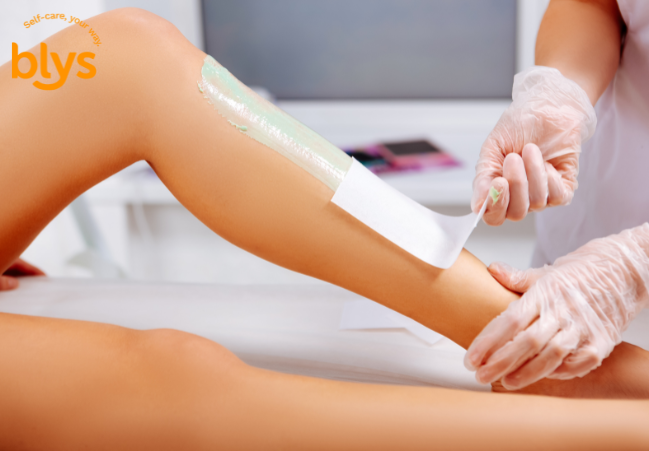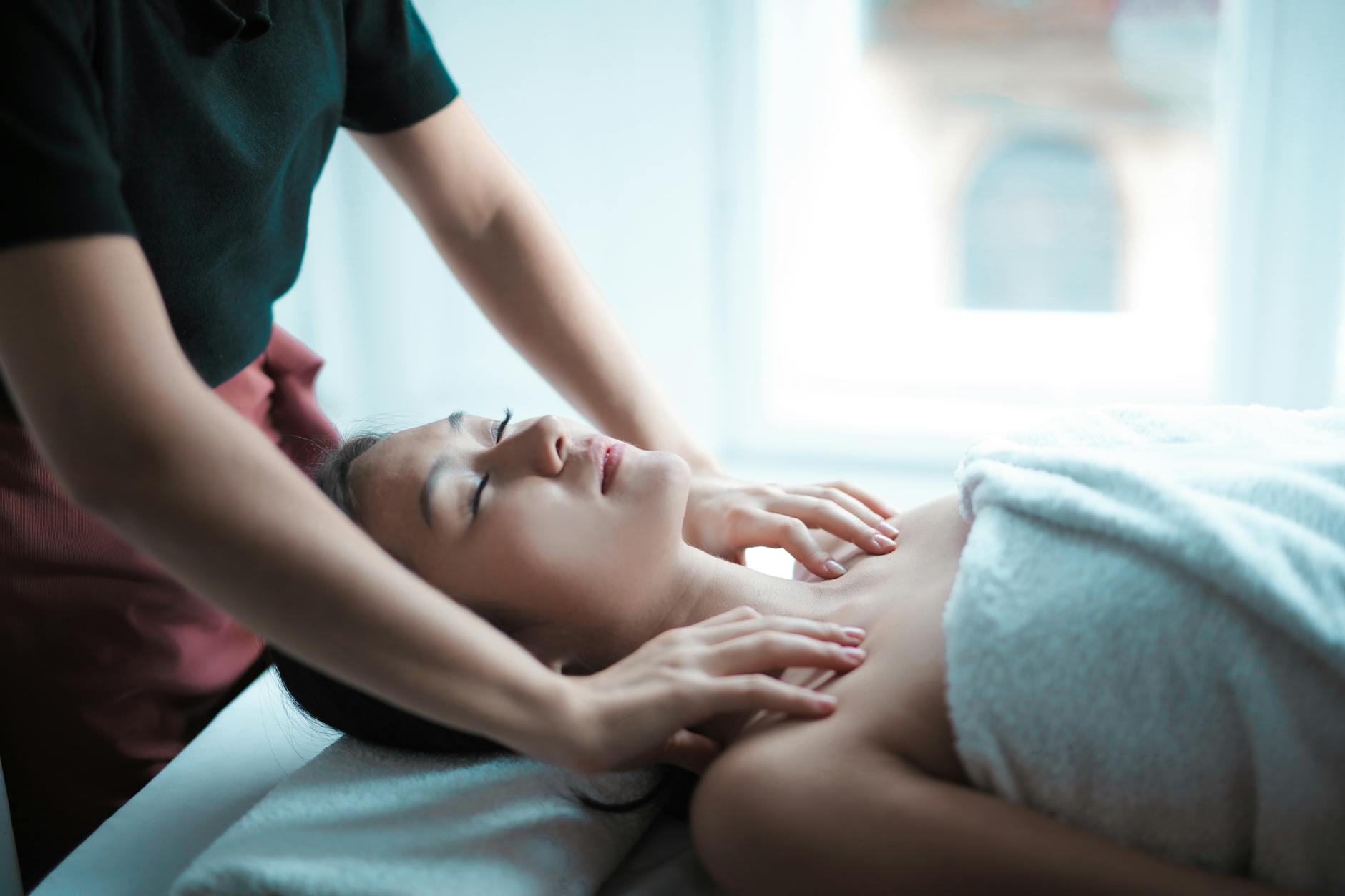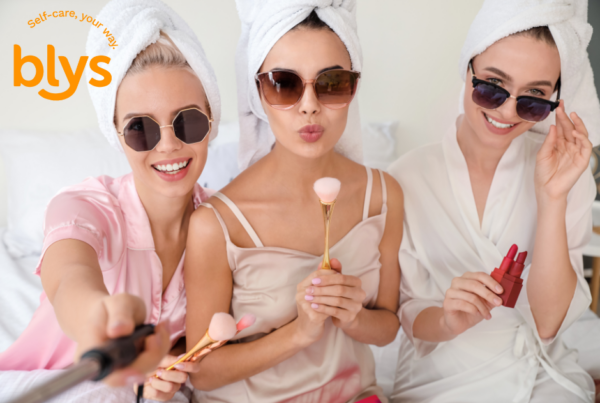A smooth waxing session is only half the story what you do afterwards makes all the difference. Without proper aftercare, even the best waxing job can lead to redness, bumps, ingrown hairs, or dry, irritated skin. On the other hand, the right post-wax routine helps lock in your results, so your skin stays soft, calm, and hair-free for longer.
Whether you’ve booked a full-leg wax, bikini, or facial waxing, your skin needs a little extra care to recover and stay in top condition. This is especially important when you’re getting treatments at home, where your environment and habits directly impact your skin’s healing process.
With a waxing hair removal service, you’re not just getting high-quality results from a trained mobile therapist you’re also getting personalised aftercare guidance during every session. Our professionals take the time to share what your skin needs, when it needs it.
What Happens to Your Skin After Waxing?
Waxing doesn’t just remove hair it also impacts the surface layers of your skin and opens up your hair follicles. This makes the skin more sensitive and more prone to irritation in the first 24 hours after your session. Mild redness, warmth, and a little swelling are all normal reactions, especially in sensitive areas like the face, bikini line, or underarms. These usually go away on their own within a few hours.
The hair follicles remain open for a short period, which increases the risk of irritation or infection if the area is exposed to friction, sweat, or bacteria. Without proper aftercare, your skin might develop folliculitis a condition where the hair follicles become inflamed.
It often shows up as small red or white bumps and is usually linked to heat, friction from clothing, or not cleansing the area gently after waxing.
Another common issue is ingrown hairs, where the new hair curls back into the skin instead of growing out. This can lead to painful bumps and inflammation if not managed early. Being mindful of how your skin reacts post-wax helps prevent these problems before they start.
First 24 Hours: The No-Go Zone
Your waxing session may be done, but the real care begins right after. The first 24 hours are the most important window for helping your skin settle, avoid irritation, and maintain that smooth finish. Because your pores are still open and your skin is extra sensitive, what you do—or don’t do during this time directly affects the results.
To get the best outcome and prevent common post-wax issues, here’s what to steer clear of in the first day:
- Hot showers, baths, steam rooms, or saunas: Heat dilates your pores and can lead to redness, sensitivity, or even bacteria getting into the skin. Use lukewarm water only.
- Sun exposure or tanning: Waxed skin is more prone to sunburn and uneven pigmentation. Even brief sun exposure can cause damage.
- Tight or synthetic clothing: Friction from leggings or jeans can irritate the area and trap heat and sweat, which may cause breakouts or rashes.
- Touching or scratching the waxed area: Your hands carry bacteria, and picking at skin can increase your risk of infection or scarring.
- Fragranced lotions, perfumes, or deodorants: These can sting or disrupt the skin’s healing process. Stick to plain, gentle moisturisers.
If redness, bumps, or discomfort linger beyond 48 hours, reach out to a GP or your Blys mobile therapist for advice on what to do next.
Curious about what not to do before or after a wax? Check out our guide on common waxing mistakes and how to fix them for extra tips.
Moisturise, But Choose the Right Products
Moisturising after waxing is one of the best ways to keep your skin soft, hydrated, and free from irritation but timing and product choice matter. While it might be tempting to apply your go-to body lotion straight away, freshly waxed skin needs a gentler approach.
Wait at least 12–24 hours before applying any moisturiser to allow your skin time to calm and for the hair follicles to begin closing. Applying product too soon especially if it contains harsh ingredients can clog open pores or trigger irritation.
When you do moisturise, avoid formulas with:
- Alcohol: can dry out and sting sensitive skin
- Fragrance and essential oils: may cause redness, allergic reactions, or burning sensations
Instead, look for soothing, skin-friendly ingredients such as:
- Aloe vera: cools and calms irritation
- Chamomile extract: known for its anti-inflammatory properties
- Colloidal oatmeal: helps restore the skin barrier and reduce itchiness
Blys mobile beauty therapists often recommend lightweight, non-comedogenic moisturisers that let your skin breathe. Products like QV Skin Lotion or Cetaphil Moisturising Lotion are gentle enough for post-wax care and widely available in the UK.
Choosing the right moisturiser helps extend the benefits of your waxing session and keeps your skin feeling its best between appointments.
Exfoliation: When and How to Start Safely
Exfoliating is key to keeping your skin smooth and preventing ingrown hairs after waxing but only if it’s done at the right time and with the right method. Start too soon, and you risk irritating freshly waxed skin. Leave it too long, and dead skin cells can trap new hair beneath the surface.
For most people, it’s best to wait 48 to 72 hours before exfoliating the waxed area. This gives your skin enough time to settle and reduces the risk of sensitivity or microtears.
When you’re ready to exfoliate, gentle methods work best:
- Dry brushing: helps boost circulation and remove flaky skin
- Mild physical scrubs: with fine particles can lift away dead skin without being abrasive
- Chemical exfoliants: like AHAs (alpha hydroxy acids) or BHAs (beta hydroxy acids), offer a no-scrub solution for deep pore cleansing
Aim to exfoliate 1 to 2 times a week, depending on your skin type. Overdoing it can lead to dryness or inflammation, especially in areas like the bikini line.
If you’re unsure what’s right for your skin, your Blys therapist can recommend options based on your skin’s condition and the area treated.
What to Avoid for Long-Lasting Results
Aftercare doesn’t end with moisturising or exfoliating it’s just as important to know what to steer clear of if you want to maintain your results and keep your skin healthy. Certain everyday habits can interfere with the waxing process, trigger irritation, or reduce how long your skin stays smooth. Avoiding the following will help you get the most from every session.
Sweating excessively
Heavy workouts, cardio classes, or even long walks in hot weather can lead to friction and sweat buildup two things that can irritate freshly waxed skin. Sweat can seep into the open hair follicles, clog pores, and create a breeding ground for bacteria.
This increases the risk of breakouts, bumps, or folliculitis, particularly in sensitive areas. Try to rest, stay cool, and let your skin breathe for at least 24 to 48 hours before returning to intense physical activity.
Swimming in chlorinated pools
Chlorine can be quite harsh on your skin, especially when it’s still healing after waxing. It strips away the skin’s natural oils, dries out the surface, and may cause stinging or redness. Even saltwater pools or hot tubs can trigger irritation. It’s best to give your skin 2–3 days to fully recover before going for a swim.
Shaving between wax appointments
Shaving cuts hair at the surface, disrupting the regrowth cycle that waxing relies on. This can make future waxes more painful and reduce their effectiveness. You also risk getting thicker, coarser hair and more ingrown hairs. Sticking to a regular waxing schedule helps hair grow back finer and makes each session smoother over time.
Using harsh skincare products
Avoid anything with active ingredients like retinol, glycolic acid, salicylic acid, or alcohol for several days post-wax. These can sting, peel, or further sensitise already vulnerable skin. Use only gentle, fragrance-free products during this time to support your skin’s barrier and help it heal properly.
New to waxing or unsure which areas to treat? Our Waxing 101 guide covers everything from body to facial hair.
How to Treat Common Skin Reactions at Home
It’s perfectly normal to experience a few mild reactions after waxing especially if your skin is on the sensitive side or it’s your first time. Knowing how to treat these symptoms early can help speed up recovery and prevent further irritation.
For post-wax redness or small bumps:
- Apply a cool compress for 5 to 10 minutes to help calm the area and reduce heat and inflammation.
- Use a gentle, fragrance-free soothing lotion with calming ingredients like aloe vera or chamomile to support healing.
If you notice ingrown hairs forming a few days later:
- Place a warm compress on the area to soften the skin and help bring the hair to the surface.
- Gently apply a salicylic acid or glycolic acid lotion to exfoliate and clear the follicle—don’t pick or squeeze.
Sometimes, reactions last longer than expected or become more severe. In those cases:
- Watch for signs like pus, spreading redness, or pain that gets worse over time—these could point to infection.
- If symptoms don’t improve within 48 hours, it’s best to consult your GP or speak with your Blys therapist for personalised advice.
Treating your skin gently during the healing period makes a huge difference in how quickly it bounces back and how long your smooth results last.
Not sure what’s normal post-wax? Chat with your Blys therapist during your next mobile waxing appointment for personalised aftercare support.
Maintaining Smooth Skin Between Sessions
Waxing is a powerful way to keep your skin smooth and hair-free, but maintaining those results takes a little care between appointments. Whether you’ve booked a full-body wax or just a few key areas, the time between sessions is when your skin resets and how you treat it during that period can make or break your next wax.
The goal is to support your skin’s recovery while also encouraging a healthy hair growth cycle. Blys clients who follow a regular routine between sessions often notice fewer ingrown hairs, less discomfort during waxing, and longer-lasting results overall.
- Stick to a regular waxing schedule: ideally every 4 to 6 weeks. This timeframe aligns with the natural regrowth cycle of your hair. Keeping appointments consistent ensures that more hairs are removed in the same stage of growth, resulting in cleaner, smoother outcomes.
- Avoid shaving between waxes: no matter how tempting it might be. Shaving resets the hair’s growth stage and creates uneven regrowth, which can lead to patchier results and more discomfort during your next session. It also reintroduces the risk of razor bumps and ingrowns.
- Hydrate and nourish your skin: from the inside out. Drink plenty of water daily and eat skin-friendly foods rich in healthy fats and antioxidants. A well-nourished body supports a strong skin barrier, improves texture, and helps reduce inflammation between treatments.
By making a few smart choices between waxing sessions, you’re not only protecting your skin you’re investing in better, longer-lasting results. Treat it like any other part of your wellness routine, and your skin will stay smoother, calmer, and more confident with every visit.
Tailored Aftercare by Waxing Area
Not all waxed areas respond the same way. Some parts of the body are more prone to friction, sensitivity, or breakouts, so it’s important to tailor your aftercare based on the location. Whether you’re treating your legs, underarms, face, or intimate areas, knowing how to care for them properly helps you stay smooth, avoid irritation, and feel more confident between sessions.
Below is a quick guide to help you care for the most commonly waxed areas:
| Area | What to Be Mindful Of | Aftercare Tip |
| Bikini & Brazilian | High friction, trapped heat, and increased sensitivity | Wear loose cotton underwear, avoid workouts and intimacy for 24–48 hours |
| Face | Delicate skin, potential for reactions to skincare or makeup | Avoid makeup and active skincare for 24 hours, patch test new creams |
| Underarms | Constant movement and deodorant use | Skip deodorant for 24 hours, use a gentle, alcohol-free roll-on after that |
| Legs | Exposed surface area, prone to dryness and ingrowns | Moisturise daily, exfoliate gently 2–3 times per week after 72 hours |
Many Blys therapists report that clients often overlook the importance of area-specific care especially for sensitive regions like the bikini line or underarms. But a little extra attention can go a long way in preventing bumps, itchiness, or discomfort.
If you’re unsure about the right care for a specific area, don’t hesitate to ask your Blys therapist during your appointment; they’re trained to give aftercare advice that suits your skin and lifestyle.
At-Home vs In-Salon Aftercare: What’s Different?
Many people think aftercare is the same whether you wax at home or in a salon, but your environment can make a noticeable difference. Where you get your treatment affects how your skin reacts, how easily you can follow aftercare steps, and how comfortable your overall experience is.
With Blys, you get salon-quality service in the comfort of your home without compromising on hygiene or professionalism. Our mobile beauty therapists bring everything they need, including hospital-grade disinfectants and single-use tools, to ensure a safe and clean treatment every time.
Here’s how at-home waxing aftercare stands out:
- Less exposure to outside elements: You won’t be walking into heat, dust, or air pollution immediately after your session, which helps reduce skin irritation and environmental stress.
- Better adherence to aftercare: Being at home makes it easier to follow instructions like wearing loose clothing, staying cool, and avoiding unnecessary activity.
- More control over your surroundings: You can choose your own towels, skincare products, and relax in your preferred space creating a calm environment for recovery.
- No travel stress: You don’t have to worry about traffic, parking, or sweating through your clothes post-treatment, which can undo some of the benefits of waxing.
- Personalised attention: Your Blys therapist takes time to walk you through aftercare tailored to your skin and the specific areas treated something not always possible in busy salons.
With fewer external irritants and more comfort, at-home waxing gives your skin the best chance to heal smoothly and maintain results longer.
Give Your Skin the Care It Deserves With Blys
Waxing gives you smooth results but the real difference comes from how you care for your skin after the session. Simple steps like avoiding heat, wearing loose clothing, and using gentle moisturiser help prevent irritation and keep your skin soft for longer.
Sticking to a schedule, exfoliating at the right time, and skipping the razor between sessions all support healthier regrowth and fewer ingrown hairs. It’s about being consistent, not complicated.
With Blys’ mobile waxing service, expert aftercare advice is built into every visit. Your therapist will guide you through what your skin needs so you don’t have to guess.
Looking for expert waxing near you? Explore our mobile waxing services by location to find a trusted Blys therapist in your area.






